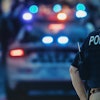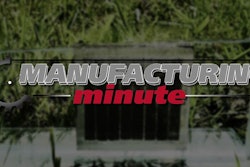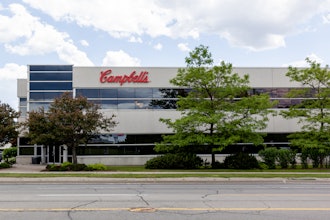
RSM
SOWING THE SEEDS OF SUCCESS:
Leveraging traceability for a competitive advantage in the industry
Overview
Traceability requirements up and down the industry supply chain are substantial and here to stay,
but there are significant benefits to be gained beyond greater tracking, visibility and compliance with
regulatory, industry and vendor mandates.
The implications and ramifications of traceability requirements exist for producers and
manufacturers throughout the food and beverage industry—from produce and grains, to meats,
seafood and dairy. While many aspects of traceability overlap among these subvertical industries,
this white paper focuses on the produce industry, using it as the lens through which we examine
both the potential costs and competitive benefits these requirements bring with them.
Over the last five years, leaders in the produce industry have leveraged elements of traceability
requirements to increase their competitive advantage; however, more recent innovations in today’s
technology, including those related to mobility, are making opportunities from these gains ever
more significant as they enable a greater, stronger and more cohesive connection among growers,
distributors, processors, retailers and consumers.
Along with increasingly flexible and extensible enterprise resource planning (ERP) solutions, the
convergence of mobile technologies and the rapid adoption of smartphones and tablets by both
business and consumer communities is enabling produce companies to leverage information in new
2and profitable ways. This paper provides the basic context within which these changes are taking
place for the produce industry, followed by a discussion of the innovations themselves, how they are
emerging in today’s marketplace and future applications of this disruptive technology that will create
new opportunities for produce executives to differentiate themselves from their competitors.
Introduction
In a landscape characterized by fierce competition, razor thin margins and stringent food safety
and traceability requirements, leaders in the produce industry are increasingly seeking means
to improve efficiency, reduce costs, maximize profit and improve brand loyalty. Addressing
challenges that range from near-immediate inventory turn times for highly perishable products to
increasing expectations of safer and healthier products from customers and consumers, virtually
every stakeholder in the produce supply chain is faced with critical decisions around inventory
management, customer demands, traceability and how to improve the bottom line along the way.
While some organizations view rising traceability requirements merely as burdensome overhead,
others are successfully leveraging the improved efficiencies and transparency that come with
improved traceability to gain and maintain a distinct competitive advantage. Against this dynamic
backdrop, this white paper provides produce industry executives insight into the role enterprise-
wide visibility, automation and mobile communications play in addressing produce-specific
traceability requirements, industry standards and changing consumer demands.
The discussion begins with a brief introduction of the players in the produce supply chain, followed
by a high-level snapshot of the produce marketplace today, including recent market trends that may
provide further opportunities for gains from savvy competitors who are able to effectively maximize
use of available technology solutions.
This examination is followed by an outline of the drivers behind and specifics around increased
traceability requirements, both voluntary and regulatory, and the areas in which produce industry
organizations may be able to gain a competitive advantage as they meet and exceed these
standards. The paper then focuses on specific opportunities for produce companies to outperform
the competition, based on the benefits rapidly emerging mobile technologies bring to the game.
Finally, the paper closes with a look at opportunities on the horizon as new mobile technologies
emerge and mature.
Stakeholders in the produce supply chain
While not an exhaustive list, the following players comprise the bulk of stakeholders in the produce
supply chain:
• Growers and shippers. Grower and shippers typically include small, medium and large farmers
that pick, sort and pack product that then goes to processors and packers. Growers deal with
pressures around managing field and labor resources, while also ensuring that the traceability
data created at the start of the chain is accurate and compliant.
• Processors and packers. Processors and packers generally include larger regional or national
companies that procure product from a variety of growers who then sort, wash and pack product
for retail consumption. Many of these companies have moved to a strategy of building brand
recognition among consumers, especially in the health and organic space. These companies are
concerned with product quality, production efficiency, supply chain efficiency, compliance with
food safety laws and brand protection.
• Wholesalers, distributors and distribution centers. Wholesalers, distributors and distribution
centers are the middlemen of the produce industry and typically not brand owners. Positioned
between processors and packers and retailers, they play a critical role in the flow of product and
information. Key concerns for these companies include warehousing efficiency, supply chain
optimization and value chain visibility.
3• Food services processors, brokerages and distributors. Food services organizations process
and distribute food products to entities such as restaurants, cafeterias, industrial caterers and
hospitals, often serving as the sales and distribution arm for smaller food manufacturers. Like
wholesalers, distributors and distribution centers, food services organizations also play a critical
role in the produce supply chain. Keys to success for these companies include warehousing
efficiency, supply chain optimization and supply chain visibility.
• Retailers. Retailers sell packaged and finished goods directly to consumers and are on the front
lines of customer interaction. Key concerns for retailers include brand protection, customer loyalty
programs and optimization of shelf space and inventory turn. Flowing customer information back
and through the supply chain is also an important function of retailers.
Produce industry market snapshot
According to data from the United Fresh Foundation, produce department sales accounted for 32
percent of total fresh sales in the first quarter (Q1) of 2015, second only to the meat department.
The produce department generated $49,369 per store, per week, a 3.2 percent increase from Q1
2014, with weekly per-store volume sales reaching $31,455, up 1.2 percent from the same time in
the previous year.1
To break these figures down further, fruits experienced a 2.5 percent increase in weekly dollar sales
per store, accompanied by a 2.9 percent increase in weekly per-store volume sales and an average
retail price decrease of 0.4 percent. For their part, vegetables experienced a slightly different growth
pattern, as weekly dollar sales per store soared 4.1 percent higher in Q1 2015 than in Q1 2014, with
weekly sales volume per store down 0.4 percent and average retail price up by 4.5 percent.2
In value-added produce, though prices were up, so were sales, which reached $3.6 billion in Q1
2015, up an impressive 11.5 percent. Value-added fruits, sold as fresh cut, in jars and cups, or with
overwrap, experienced a 6.2 percent increase in weekly dollar sales per store and a 0.5 percent
increase in weekly sales volume, despite an average retail price that was 5.6 percent higher than
in Q1 2014. Similarly, value-added vegetables, sold as side dishes, in trays (or party platters), for
snacking, or for use in meal preparation, saw increases of 11.5 percent in weekly dollar sales per
store, 8.2 percent in weekly volume per store and 3.0 percent in average retail price.3
While growth in these categories is impressive,
so too was the organic sales sector, which
accounted for 8.2 percent of all produce sales
in Q1 2015, an increase from 7.3 percent in the
same period of 2014. In all, there were $957
million in organic produce sales in Q1 2015 alone,
up a staggering 16.5 percent. While there was a
7 percent increase in the number of organic
produce items carried by grocery stores, fruits
and vegetables continue to be a consumer
mainstay, increasing sales by 17.5 percent.
Interestingly, as shoppers increasingly seek
healthier options, food products that include
produce components are rapidly growing in
popularity. For example, produce sales in the
deli department—led by the salad bar, which
experienced a 5.3 percent weekly dollar sales
increase and a 4.3 percent weekly volume sale increase—rose to $405 million in Q1 2015 alone, up
9.8 percent from Q1 2014.4
This microvertical industry snapshot is useful when examining consumer purchasing behavior, and
the ways in which industry trends may be married with existing and future technologies to yield
optimal results for members of the produce community seeking success in the marketplace with
means other than a “price-to-price” comparison with the competition. For example, as consumers
4.50%
4.25%
4.00%
3.75%
3.50%
3.25%
3.00%
2.75%
2.50%
2.25%
2.00%
Weekly Dollar Sales per Store
VEGETABLES
FRUITS
Produce gains in weekly dollar sales
(Q1 2015, year over year increases)
4increasingly seek out organics and locally grown produce, adoption of technologies that provide
them with easy access to thorough and accurate details around how and where their produce was
grown, handled and transported could mean the ability to move from a commodity pricing model to
one that commands both higher margins and greater brand loyalty. The ability of some of today’s
technology to provide the produce industry not only with traceability, but also with true revenue-
generating opportunities will be discussed throughout this paper.
Produce and public health safety: An ongoing need for traceability
At the most basic level, the produce industry is subject to traceability standards and requirements
that originated with concern over potential harm to humans and animals arising from tainted,
contaminated or mislabeled food. While many domestic production methods have increased in
sophistication over the decades, the need for such protections has not been eliminated. Consider the
following recent adverse events in the produce supply chain:
• In September 2015, after the California Department of Public Health found high levels of the heavy
metal cadmium in bags of baby spinach (more than 10 times the average amount), its Salinas,
California-based producer voluntarily recalled the item in question.5
• In April 2015, at least six food companies issued voluntary recalls of products made using spinach
from an Oxnard, California-based vegetable processor, citing risk of listeria contamination.6
• In January 2015, after tests performed by the FDA found a connection between a California apple
processing plant and a strain of listeria bacteria that killed seven people and sickened more than
30, the plant voluntarily recalled an undetermined number of Gala and Granny Smith apples from
retailers.7
In addition, outbreaks linked to imported produce are also on the rise, as illustrated by the following
two examples:
• In September 2015, a salmonella outbreak linked to imported Mexican cucumbers sold by a San
Diego-based produce distributor resulted in two deaths, 91 hospitalizations, and 418 confirmed
cases of foodborne illness reported across 31 states, including California and Texas.8,9
• As of August 2015, 495 people in 30 states were infected with cyclospora, a single-cell intestinal
parasite, with clusters of illnesses identified in Texas, Wisconsin and Georgia, believed by the U.S.
Centers for Disease Control (CDC) to be attributed to imported cilantro.10
With health and safety drivers of traceability front and center, the produce community is all too
aware of the profound long-term damage that can beset an entire industry or its segments when
elements of contamination cannot be accurately traced and addressed. Overall loss to the produce
industry attributed to lack of adequate traceability has at times been estimated at up to 50 percent.
Perhaps the most graphic illustration of this point can be seen in a 2008 salmonella outbreak
attributed to contaminated tomatoes that sickened 1,300 people, required hospitalization of 250
and cost the tomato industry $250 million in lost revenue over a one-year period. Subsequent
research determined the contamination actually originated from serrano peppers coming out
of Mexico that had been mixed with the tomatoes in salsa—but lack of adequate traceability
prompted broad warnings around tomatoes that erred on the side of safety. By the time the truth
was discovered, the collateral damage to the tomato industry was irreversible.11 Trust was lost,
and at that point in time, few if any technology tools existed that were capable of quickly restoring
consumer confidence.
Within this unforgiving landscape, produce industry leaders are looking to mobile-enabled
technology solutions that provide not only traceability of their products throughout the supply
chain, but also provision of critical data all the way to the consumer, enabling greater consumer
confidence, establishing stronger brand loyalty and significantly impacting revenue potential. Some
of the market opportunities these new technologies are affording the produce industry will be
discussed later in the paper.
5Traceability drivers
Over the last decade, scores of highly publicized recalls have forced the produce industry and
regulators alike to rethink traceability requirements. On one hand, the industry has sought to regulate
itself in an effort to stave off additional compliance pressures. On the other hand, regulators have
had to respond to public outcry from consumers and lawmakers. The result has been the creation of
produce-specific industry standards that, while voluntary, have been necessary to operate in such
a highly complex and restrictive industry. In addition to the industry standards, produce companies
have also had to contend with the unique demands of many of their customers, including big box
retailers that have imposed increasingly stringent traceability and quality standards.
Voluntary initiatives
Within the realm of “voluntary” traceability, the produce industry is affected by both industry
pressure and by requirements put in place by retailers and “further processors” of produce.
Interestingly, voluntary measures in this scenario are often stricter than regulatory measures,
perhaps indicating a preference among members of the produce supply chain to be self-regulating
rather than ruled by external government entities they feel may be less familiar with the intricacies of
their businesses.
Industry—Produce Traceability Initiative
The produce industry is notable in that it has led the way among its food counterparts in both
consumer demand for “farm-to-fork” traceability and in industry adoption of this vision, driven
by the recognition that the risks faced by consumers, individual companies and the industry as
a whole have been profound and costly. To address these concerns and make the farm-to-fork
vision a reality, the produce industry began its own traceability charge with the creation of the
Produce Traceability Initiative (PTI) in 2007. PTI is an industry consortium comprised of growers,
food processors, retailers, industry trade groups and technology partners with a vision and plan
for supply chain-wide adoption of electronic traceability. PTI has also been used as a model for
traceability initiatives in other industries, including dairy, meat, seafood and packaged foods.
Vendor initiatives
Soon after its creation, prominent produce retailers, including Wal-Mart®, Safeway®, Kroger®,
and Food Lion®, quickly went on record endorsing the goals of PTI.12 While PTI sought to establish
a broader standard and platform for traceability in the produce industry, retailers and further
processors of produce intently focused on risk mitigation, reputation management and brand
protection, continuing to push for even more rigid guidelines regarding quality, safety and freshness—
particularly when produce is used in private label and store brand products. These nonregulatory
“vendor” requirements are generally considered to have as much if not more impact on produce
processors than many current government requirements, as failure to meet vendor traceability
standards in even a single mock recall can mean immediate termination by the vendor without
additional warning or notice. With their extreme focus on brand protection, retailers often make
periodic mock recalls part of their relationship with suppliers, sometimes even moving outside the
organization to an auditing agency to ensure the results of food-safety audits are independently
verified.
The power of “voluntary” vendor requirements in promoting adherence to traceability standards and
goals cannot be overstated. Says a bar-coding industry executive specializing in mega-retailers,
“The real mandate for them [produce suppliers] isn’t the government guidelines so much as
mandates from retailers. When retailers set the expectation that traceability is a condition of doing
business, then growers will fully adopt the standard.”13
Regulatory—Food Safety Modernization Act
While PTI is technically a voluntary initiative within the produce industry, it also helped to develop
much of the seminal work that was later incorporated into the U.S. Food and Drug Administration
(FDA) Food Safety Modernization Act (FSMA) of 2010, signed into law on Jan. 4, 2011, as the most
sweeping reform of U.S. food safety laws in more than 70 years. The act is focused on ensuring the
6U.S. food supply is safe by shifting the focus from responding to contamination to preventing it.14
Primary aspects of the law include:
• Preventive controls: To take a more proactive approach to food safety, the FDA established
mandates that require food facilities to evaluate hazards in their environment and operations, then
implement and monitor safety measures to prevent contamination. In the event that any issue
occurs, companies must also have in place a plan of action to ensure swift corrective action.
• Inspection and compliance: The FDA is committed to innovating its inspection processes to
maximize efficiency, with a focus on applying resources in a risk-based manner.
• Imported food safety: Millions of food products enter the United States every year. In fact, the FDA
estimates that 15 percent of the U.S. food supply is imported, including 60 percent of fresh fruits
and vegetables and 80 percent of seafood. Because of this, FSMA legislation includes initiatives to
ensure imported food safety (including supplier verification activities), and gives the agency the
power to refuse a food product if a supplier refuses inspection as well as require certification that
imported products are in compliance with food safety standards.
• Response: The FSMA gives the FDA mandatory recall authority for all food products, a valuable
advancement in the agency’s ability to protect public health.
• Partnerships: The legislation encourages collaboration across food safety agencies, including
federal, state, local, territorial, tribal and foreign sectors, and supports activities that encourage and
facilitate this teamwork.15
The FSMA also includes provisions directing the FDA to “establish a system that will enhance its
ability to track and trace both domestic and imported foods. In addition, FDA was directed to establish
pilot projects to explore and evaluate methods to rapidly and effectively identify recipients of food to
prevent or control a foodborne illness outbreak.”16
Two pilot projects were required, with the intent to determine what data are most needed to trace a
widely distributed product back to a common source. One project was reserved for the processed
food sector, and another was focused on processors and distributors of raw fruits and vegetables.
Announced in September 2011, the Product Tracing Pilots were carried out through the FDA’s existing
contract with the Institute of Food Technologists (IFT). According to the FDA, “The pilot projects
were designed to explore and demonstrate methods for rapid and effective tracking and tracing of
food, including types of data that are useful for tracing, ways to connect the various points in the
supply chain and how quickly data can be made available to FDA. In addition to providing the findings
of the pilot projects, the report contains IFT’s recommendations to FDA for improving the tracking
and tracing of food.” The FDA released the final report on the pilot projects in March 2013,17 with key
recommendations from the IFT that include:
• The establishment of a uniform set of record keeping requirements for all FDA-regulated foods
• The identification and recordkeeping of Critical Tracking Events and Key Data Elements by food
manufacturers, processors, packers, transporters, distributors, receivers, holders or importers
• The requirement to submit more than one level of tracing data, if available
• The adoption of a technology platform that allows efficient aggregation and analysis of data
submitted in response to a request from regulatory officials18
The FDA has proposed seven foundational rules to implement FSMA, set to be finalized in 2015 and
2016. The first two, Preventative Controls for Human Food and Preventative Controls for Animal
Food, were finalized and issued on Sept. 10, 2015. The next three rules, including Produce
Safety, Foreign Supplier Verification Program and Third Party Certification, are set to be finalized and
issued on Oct. 31, 2015. The remaining two, Sanitary Transportation and Intentional Adulteration, will
be finalized on March 31, 2016, and May 31, 2016, respectively.19
7New regulatory requirements brought to segments of the produce supply chain by the FSMA include:
• Growers and shippers: Development of mandatory produce safety standards
• Fresh-cut processors, wholesalers and distributors: Registration of facilities every two years,
requirement for food facilities to develop and implement preventive control standards, creation of
risk-based inspection frequency programs for food facilities, ensuring FDA has access to records
associated with a food that may be part of an outbreak investigation or any other article of food
that is likely to be affected in a similar manner, FDA authority to suspend registration of any facility
where there is reasonable probability that food from the facility could cause serious adverse
health consequences to humans or animals
• Importers: Requirements to perform risk-based foreign supplier verification to confirm
that imported food is produced in compliance with applicable U.S. laws and not adulterated
or misbranded, requirements for FDA to establish a voluntary qualified importer program,
authorization for FDA to mandate that imported food have a certification of compliance with
applicable requirements
• Retailers and food service: Requirements for additional information to be submitted to the
reportable food registry that impacts retailers
• Food transporters: Requirements for FDA to develop new regulations for the safe transport of
food
• General: Authorization for FDA to require a mandatory recall of any product for which there is
a reasonable probability that the product is adulterated or misbranded and will cause a serious
adverse health consequence or death; mandates for FDA to pilot tracing systems, consider
establishing a product tracing program, and expand record keeping requirements for high-risk
foods; requirements for FDA to develop guidance and regulation to protect against intentional
contamination20
The new law also requires produce shipments to have bar code or QR code labels to the case level
that identify producer, production location, and “unique lot number and content description.” Key
revisions to the rule are being considered and include adjustments to water quality standards and
clarifications on wild animal provisions, among other updates, with finalization set for Oct. 31, 2015.22
Traceability and technology
Against this backdrop, the proverbial writing has been on the wall for some time for stakeholders
in the produce supply chain: industry and regulatory standards for traceability cannot effectively
be met with cumbersome and time-consuming manual and paper-based records, or even with
rudimentary technology tools.
To address these challenges, produce companies often look to technologies like ERP systems as
their operational system of record for traceability. While many ERP systems offer some level of
transparency and access to information on merchandise source, production and line operations,
inventory and customer shipments, most ERP systems are not ideally suited to provide the full
functionality required to effectively support mock or actual recall scenarios.
Historically, this capability gap has forced many produce companies to either heavily invest in
disruptive ERP customizations or to rely on manual spreadsheets and workflows to augment missing
functionality. This reality underscores the need for leading produce companies to select a vertical-
specific ERP solution able to both accommodate complex track and trace reporting for compliance as
well as support bidirectional customer and consumer safety communications to ensure brand loyalty
and trust.
Traceability as a competitive advantage
For growers and shippers, pickers and packers of produce, back-office technology platforms have
traditionally been viewed as disconnected, inflexible information systems used simply to warehouse
basic data in categories like contract versus yield price, trade promotions efficacy, inventory
availability, sales orders and delivery status—or information necessary to comply with industry and
governmental mandates.
8Although point of origin information, including country, planting region, farm name, date and time of
harvest, field team and other elements is considered a “must have” to meet regulatory requirements,
this treasure of uniquely relevant, available data has rarely been leveraged to its potential as a toolset
to achieve myriad tangible business benefits, including:
• Greater consumer confidence and brand loyalty
• Faster response times in recall scenarios
• Automated, on-demand push notifications to consumers
• Real-time access to product information
• Accommodation of Field-Pack, Shed-Pack, or Line-Pack with automatic tracking of
lot commingling
• Ease of use and high degree of configurability
• Additional real-time product information for B2B processors
• Real-time traceability within a highly complex supply chain
At the most basic level, traceability tools integrated into an ERP system of record enable produce
stakeholders to deliver the right product faster, in the right quantities, to the right place, at the right
time. At a higher level, some solutions now allow consumers to access a comprehensive dashboard
of product information, not only to view recall inquiries, but also to receive value-added product
information and promotions.
From a business process perspective, today’s technology allows quality assurance staff to automate
any number of daily functions, and in the event of a significant food safety event, easily place relevant
holds on production and fulfillment processing, depending on the additional ERP-centric functionality
currently in play.
Technology also offers produce companies quick access to recall; freshness; country of origin and
grower, lot and processing facility information; nutrition and allergen information; and recipe options.
These same consumers can sign up for active push notifications so that they are proactively made
aware if a recall is executed, helping to avoid potentially dangerous food and, in so doing, dramatically
affecting consumer confidence.
Particularly with growing consumer demand for organic, locally grown, regionally grown and
sustainable produce, extending available information all the way back to the consumer builds brand
loyalty. Technology enables stakeholders to communicate critical information that may include
where a particular item was grown, chain of custody and recall information, as well as to differentiate
their products for consumers—for example, organic products or “locally grown” or “identity
preserved” produce targeted to specific markets.23, 24
From a cost reduction and inventory control perspective, producers who lack accurate data on what
they have in the warehouse tend to produce too much, resulting in loss due to spoilage. Today’s
technology enables real-time visibility into accurate inventory of products in the warehouse and
information on what is being loaded during shipping. With better inventory information, shipping
can take place immediately and production scheduling can be optimized to better meet demand.
Some vendors also offer technology designed to work for both branded and private label products,
regardless of the complexity of the distribution channel.
Technology solutions also exist that can operate in a variety of delivery models, depending on
the user’s needs. Solutions that can be delivered either on-premise (with software installed on a
produce company’s own servers) or on-demand (accessible via the Internet) ensure processors
and retailers are able to maximize the technology’s functionality in the way that best suits their
individual business requirements.
Some of the most advanced technology in this space enables produce companies to truly
distinguish themselves from competitors, allowing them to push highly targeted coupons, buy
one, get one (BOGO) and other trade promotions to consumers while also maximizing feedback
capture capabilities to encourage repeat purchases and drive revenue. These highly configurable
solutions allow produce companies to respond rapidly to changes in consumer behavior, enabling
9them to quickly change messaging and campaign branding by company, product line, label and retail
trademark. These capabilities are a game changer with real potential to build brand recognition,
loyalty and consumer preference.
Traceability goes mobile
Advancements in mobile technology, the rapid adoption of smartphones and tablets by businesses
and consumers, and increasingly flexible and extensible business applications have converged,
enabling produce companies to harness information like never before. Forward-thinking produce
companies are leveraging this convergence to extend highly detailed product information all the
way to the consumer’s fingertips, providing further safeguards from recalls while simultaneously
improving customer and brand loyalty.
This comprehensive consumer connection is allowing grower and shippers, processors, distributors
and retailers to use mobile technology tools to markedly strengthen customer preference and drive
repeat purchases and greater revenue opportunities, while also providing consumers with greater
peace of mind.
For these companies, coding, tracking and tracing produce items start at the field level, processing
facility or packing plant where unique coded labels are applied to cases or individual items, with
product information linked to a specific grower, manufacturer or processing facility. This valuable
information is passed down the supply chain:
• Produce processors are able to determine the quality and viability of items being delivered by
suppliers before pallets or containers are even taken off the delivery truck.
• Retailers are able to verify the alert and recall status of merchandise before they stock store
shelves or make it available online.
• Consumers are able to determine with certainty that the produce they select is safe and access
a host of other relevant information designed to drive confidence and trust, including nutrition
details, allergen notices, product information, organic certification, grower profiles, recipes and
produce active push alerts.
• Growers and shippers, packers, processors and retailers can engage promotions and offer
coupons at the shopping cart level to encourage additional purchases and help build brand loyalty.
Underscoring the value this type of technology might bring to the produce industry, BBC News
reports, “consumers are 12 percent more likely to buy a product that can be traced.”25 Interestingly,
this phenomenon has the potential to hold true even if the produce in question is offered at a
premium price point.
Though only anecdotal, a leading produce industry publication noted that consumers in a Salinas,
California-based market study were willing to pay up to 30 percent more for Valencia oranges that
contained smartphone-scannable barcodes that provided them with regional grower information
before they reached the checkout register.26
Similarly, for retailers paying a premium to carry “home grown or prepared” specialty produce items
to better meet consumer demand, instantly being able to validate grower and harvest information
can have a substantial impact at the cash register.
A study from Cornell University revealed that consumers were willing to up to 50 percent more
for local produce that had a label or marketing materials containing harvest information and
a“farm identity.” General food products with organic traceability yielded even higher results, with
shoppers demonstrating willingness to pay up to 82 percent more for these products than for their
undocumented counterparts.27
A study from Cornell University revealed that consumers were
willing to pay up to 50 percent more for local produce that had a
label or marketing materials containing harvest information and
“farm identity.”
10
Looking forward: Not your father’s traceability
Forward-thinking produce companies have been leveraging traceability requirements imposed by
regulators, retailers and industry trade groups to improve aspects of their business for some time,
and are now beginning to capitalize on the next wave of advances in technology to improve
margins, strengthen brand and customer loyalty, and ultimately create a competitive
advantage.
Existing functionality in today’s technology enables consumers to scan a bar code, QR code or
metatag to determine whether a product has been recalled or to receive an alert via email; the next
step will be to push instant notifications or SMS text messages to a consumer’s smartphone when a
recall has occurred. Imagine looking down at a smartphone to see a text reading, “The bag of spinach
you purchased on May 5 has been recalled.”
Envision further the possibilities of integrating this type of technology with shopper loyalty cards.
Advances in ERP functionality are well on their way to linking merchandise detail information with
smartphones and shopper loyalty programs, and storing the information in a single database.
This repository would then be searchable by the manufacturer or retailer in the event of a critical
merchandise update or recall scenario. Notifications could be segmented in realtime based on
purchase activity, expiration date, allergen information or any set of criteria dictated at the ERP
management level and directly pushed to the consumer.
Potential for significant revenue enhancement also exists from a marketing and promotions
perspective. By linking ERP data with couponing programs, retailers can cost-effectively drive
relevant, targeted offers based on buyer history and current preferences. Coupon delivery can be
automated to push alternative offers to a shopper’s mobile device, even prior to that consumer
leaving the retail store, website or e-commerce portal. This ability to dynamically update offer
information has significant potential to influence buyer behavior and drive customers to higher-profit
merchandise that closely matches their up-to-the-minute interests.
The bottom line is that business opportunities can now be maximized using vertical-specific
ERP platforms and software synced with the latest in mobile communications, allowing produce
companies to efficiently and cost effectively comply with government, industry and vendor
requirements while also enhancing trust and brand loyalty. Bridging the chasms between the
farm/plant/distribution site, and the point of sale—regardless of how business is transacted—
enables all players in the produce supply chain to deliver a positive purchasing experience, and one
for which all parties are willing to pay a premium.
While the market potential for these new technologies in the produce arena seems limitless, the
scenarios described are far from wild theorizing of “Jetsons- like” capability—technologies like these
are entering production with the help of vertically focused solutions providers and are beginning to
be leveraged by both regional and global leaders in the produce industry.
11
Endnotes
1. ‘Fresh Facts on Retail,’ Q1 (Jan.-March 2015), United Fresh Produce Association.
2. Ibid.
3. Ibid.
4. Ibid.
5. ‘CA Baby Spinach Recalled for Elevated Levels of Cadmium,’ September 12, 2015, News Desk, Food Safety News.
6. ‘What You Need to Know About Those Spinach-Related Recalls,’ April 9, 2015, News Desk, Food Safety News.
7. ‘California Apple Plant Issues Recall After Tests Find Link To Deadly Listeria Contamination,’ January 12, 2015,
Ashlee Kieler, Consumerist.
8. ‘Custom Produce Recalls Cucumbers Connected to Salmonella Outbreak,’ September 13, 2015, News Desk,
Food Safety News.
9. ‘CDC: 2 Deaths, 418 Salmonella Cases in 31 States Linked to Cucumbers,’ September 15, 2015, Cathy Siegner,
Food Safety News.
10. ‘CDC: 495 in 30 States Now Have Cyclospora Infection, Possibly From Cilantro,’ August 25, 2015, Cathy Siegner,
Food Safety News.
11. ‘Tracing Food in the Supply Chain,’ 2010, LXE, Inc.
12. Ibid.
13. Ibid.
14. ‘FDA Food Safety Modernization Act of 2010: Likely Impact on the Produce Industry,’ January 2011,
United Fresh Produce Association.
15. “Food Safety Legislation Key Facts,” U.S. Food and Drug Administration.
16. ‘FDA Food Safety Modernization Act of 2010: Likely Impact on the Produce Industry,’ January 2011,
United Fresh Produce Association.
17. “Frequently Asked Questions: Product Tracing Pilots,” U.S. Food and Drug Administration.
18. Ibid.
19. “Frequently Asked Questions: How will FDA implement FSMA?” U.S. Food and Drug Administration.
20. ‘FDA Food Safety Modernization Act of 2010: Likely Impact on the Produce Industry,’ January 2011,
United Fresh Produce Association.
21. ‘How Traceability Legislation ay Impact the Food Supply Chain,’ July 26, 2011, Derek Rickard and Donald Ratcliff, Georgia
Tech Integrated Food Chain Center website: http://mhlnews.com/global/traceability- legislation-impact-food-supply-
chain-0726/.
22. “FSMA Proposed Rule for Produce Safety: Standards for the Growing, Harvesting, Packing, and Holding of Produce for
Human Consumption, U.S. Food and Drug Administration.
23. ‘Retail Produce Supply Management,’ University of Oregon, Sustainable Business Case Study Cache.
24. ‘Building Regional Produce Supply Chains,’ August 2011, Revised January 2012, FarmsReach.
25. ‘Field to the Fork: Tracking Produce Back to Farmers,’ March 4, 2011, Jane O’Brien, BBC News, Washington.
26. ‘Shoppers Pay for Traceability, Top 10 Produce Says,’ February 3, 2011, Mike Hornick, The Packer.
27. ‘Do Price Premiums Exist for Local Products?’ February 2011, Kristen Park and Miguel I. Gomez,
Charles H. Dyson School of Applied Economics and Management, Cornell.
+1 800 274 3978
www.rsmus.com
This document contains general information, may be based on authorities that are subject to change,
and is not a substitute for professional advice or services. This document does not constitute audit,
tax, consulting, business, financial, investment, legal or other professional advice, and you should
consult a qualified professional advisor before taking any action based on the information herein. RSM
US LLP, its affiliates and related entities are not responsible for any loss resulting from or relating to
reliance on this document by any person. Internal Revenue Service rules require us to inform you that
this communication may be deemed a solicitation to provide tax services. This communication is being
sent to individuals who have subscribed to receive it or who we believe would have an interest in the
topics discussed.
RSM US LLP is a limited liability partnership and the U.S. member firm of RSM International, a global
network of independent audit, tax and consulting firms. The member firms of RSM International
collaborate to provide services to global clients, but are separate and distinct legal entities that cannot
obligate each other. Each member firm is responsible only for its own acts and omissions, and not
those of any other party. Visit rsmus.com/aboutus for more information regarding RSM US LLP and
RSM International.
RSM® and the RSM logo are registered trademarks of RSM International Association. The power of
being understood® is a registered trademark of RSM US LLP.
© 2016 RSM US LLP. All Rights Reserved.






















